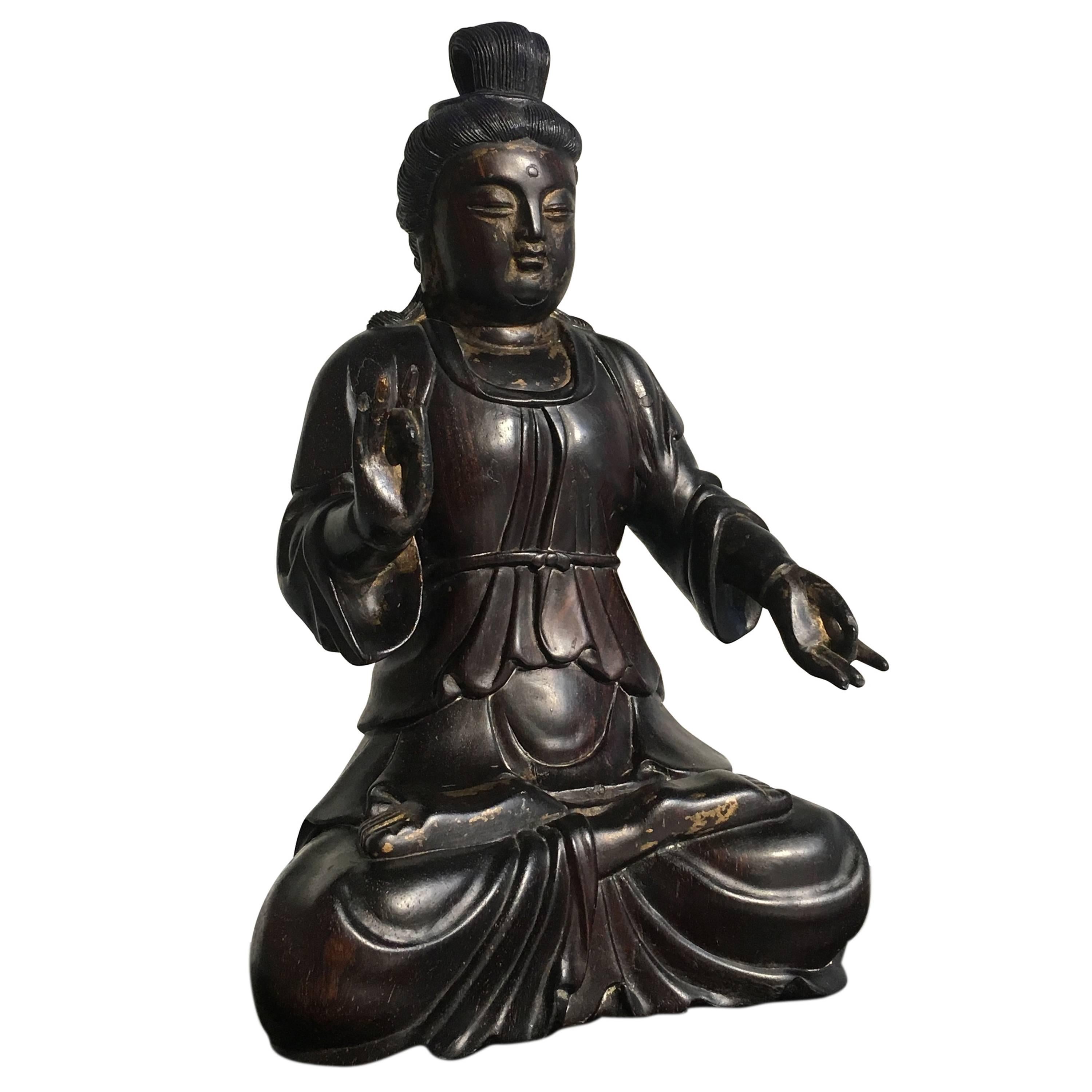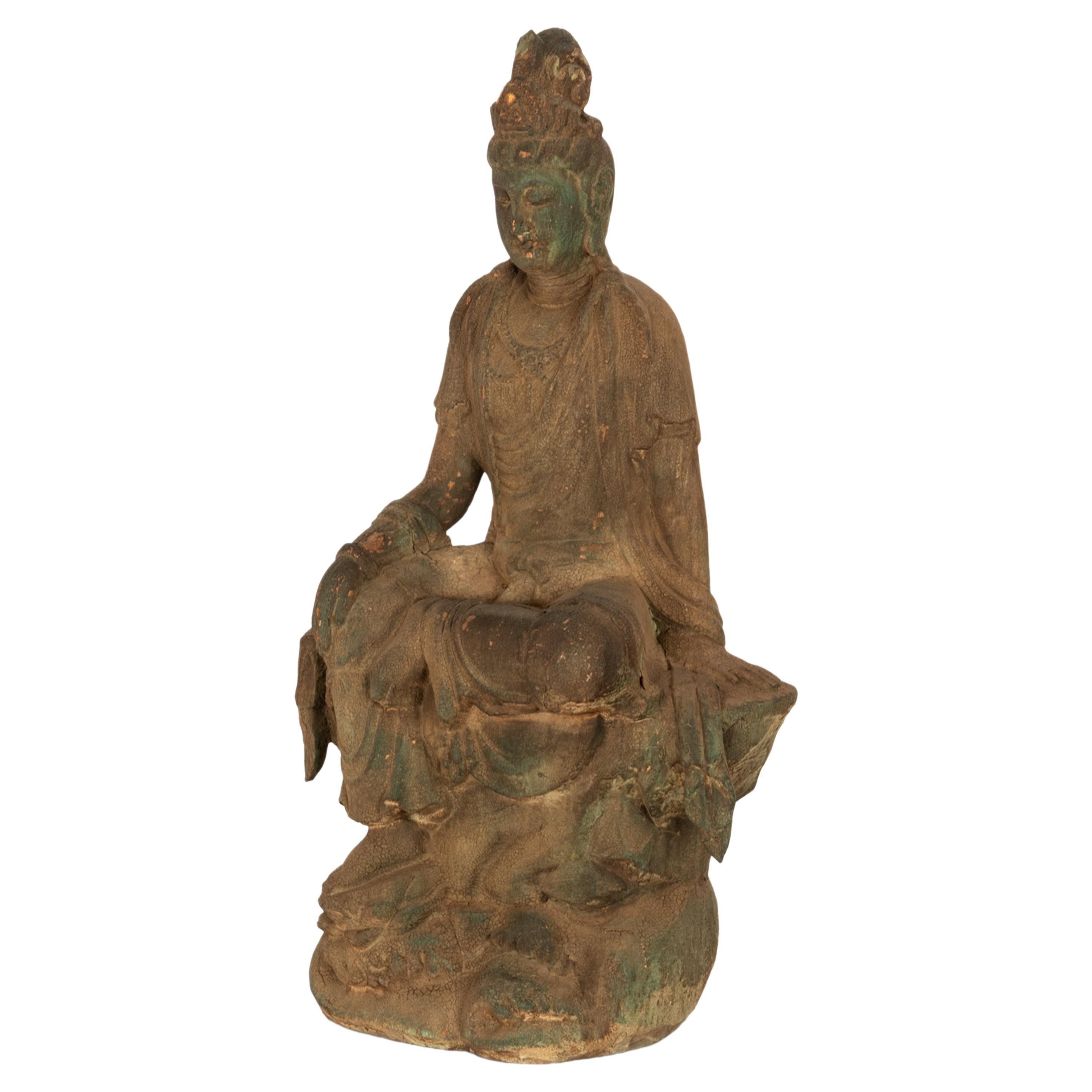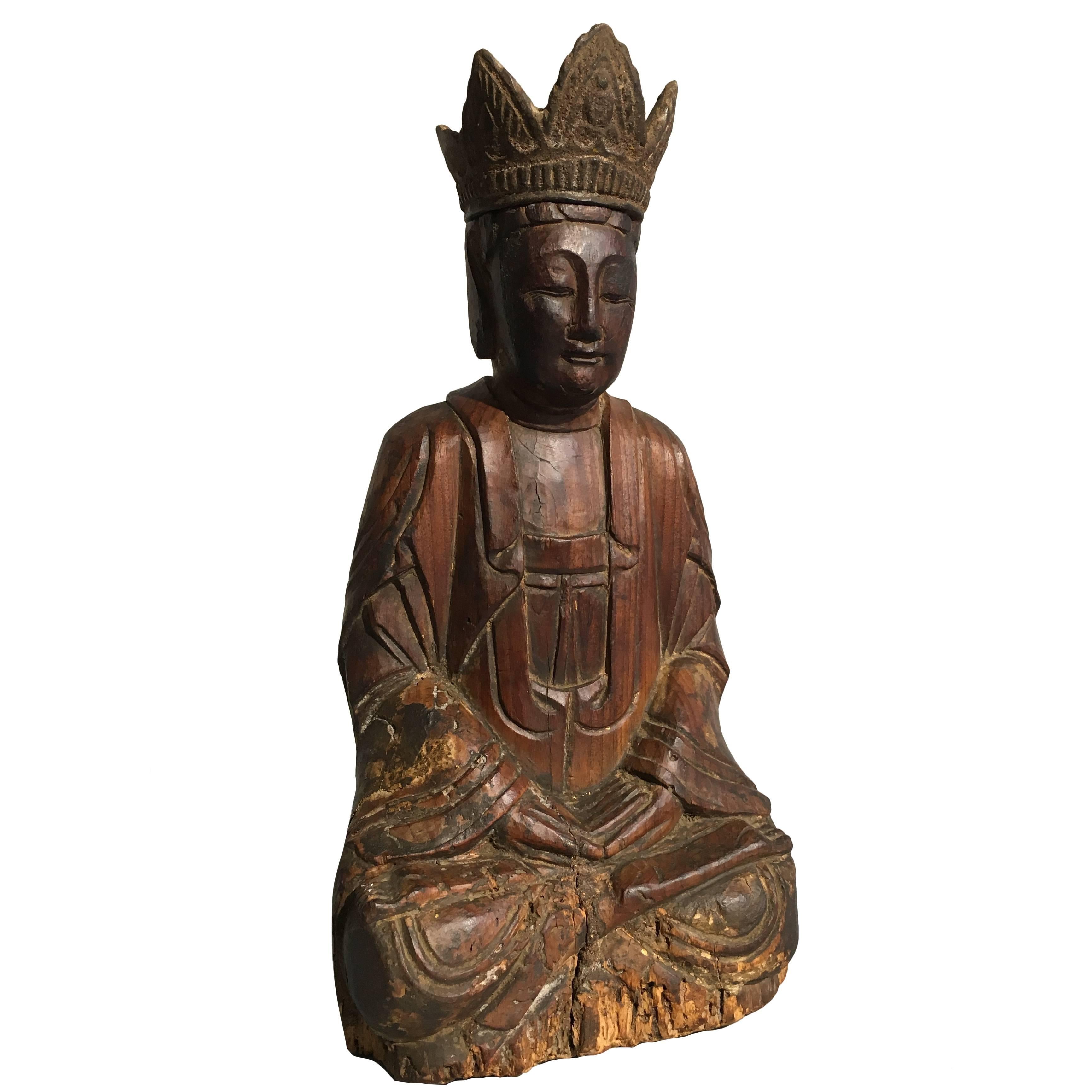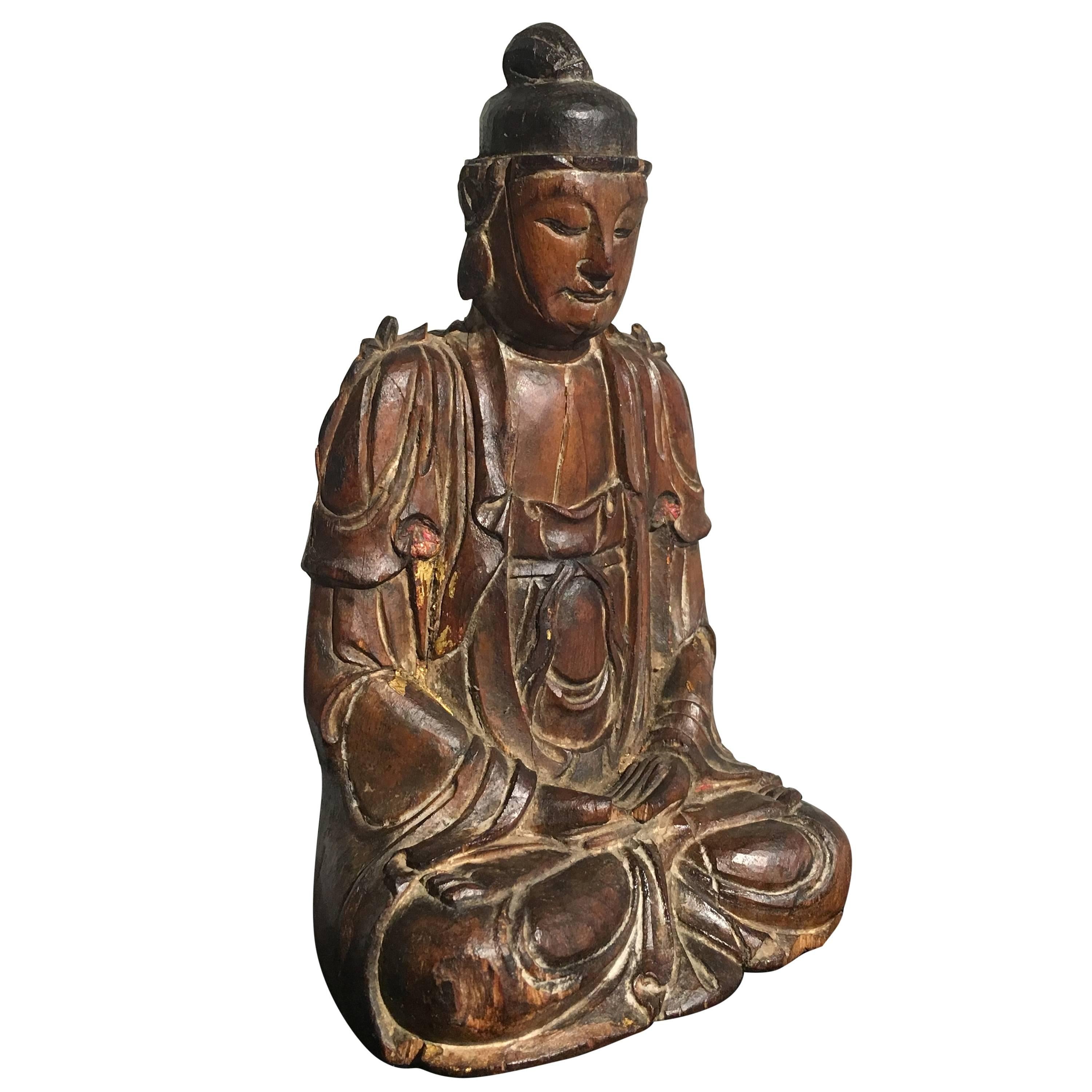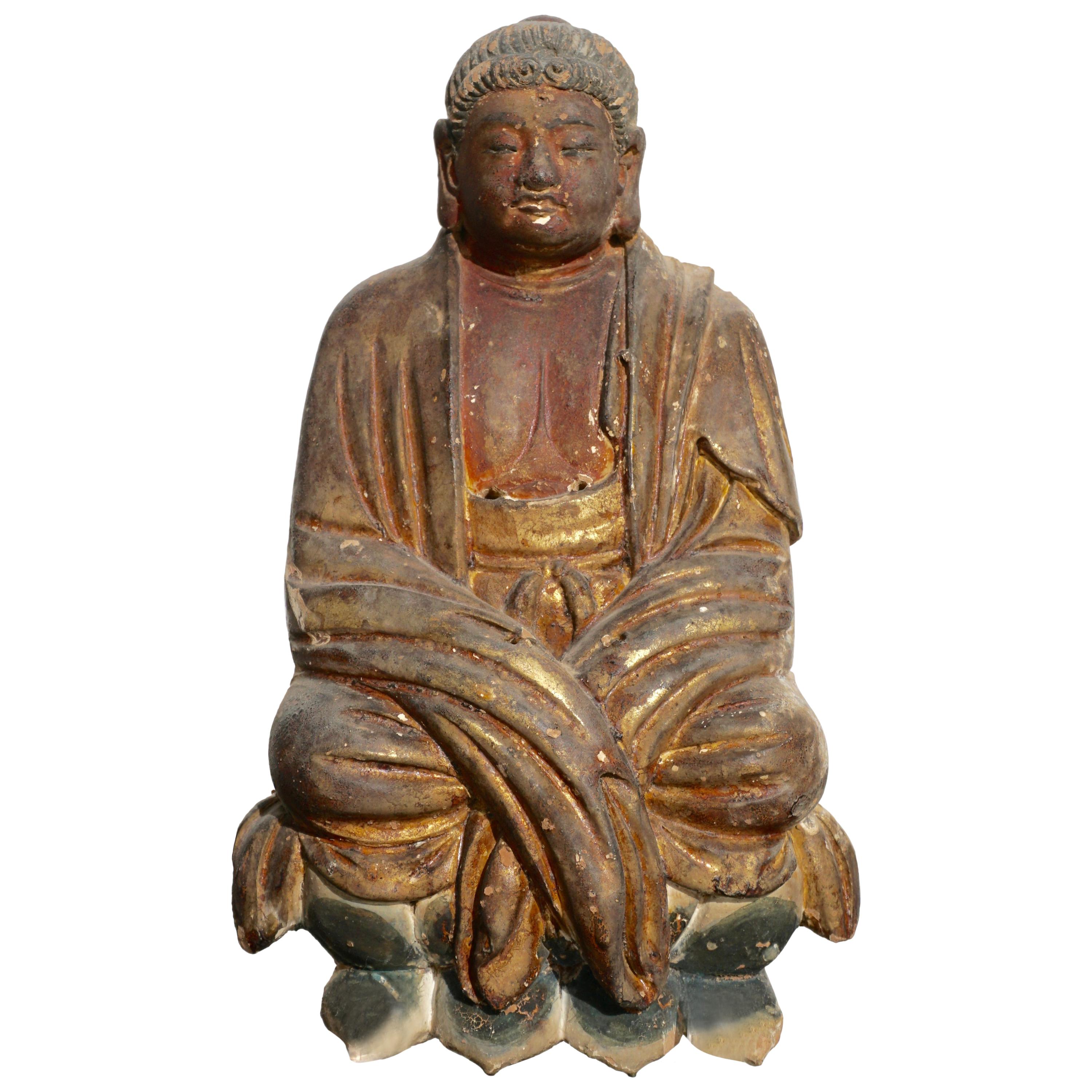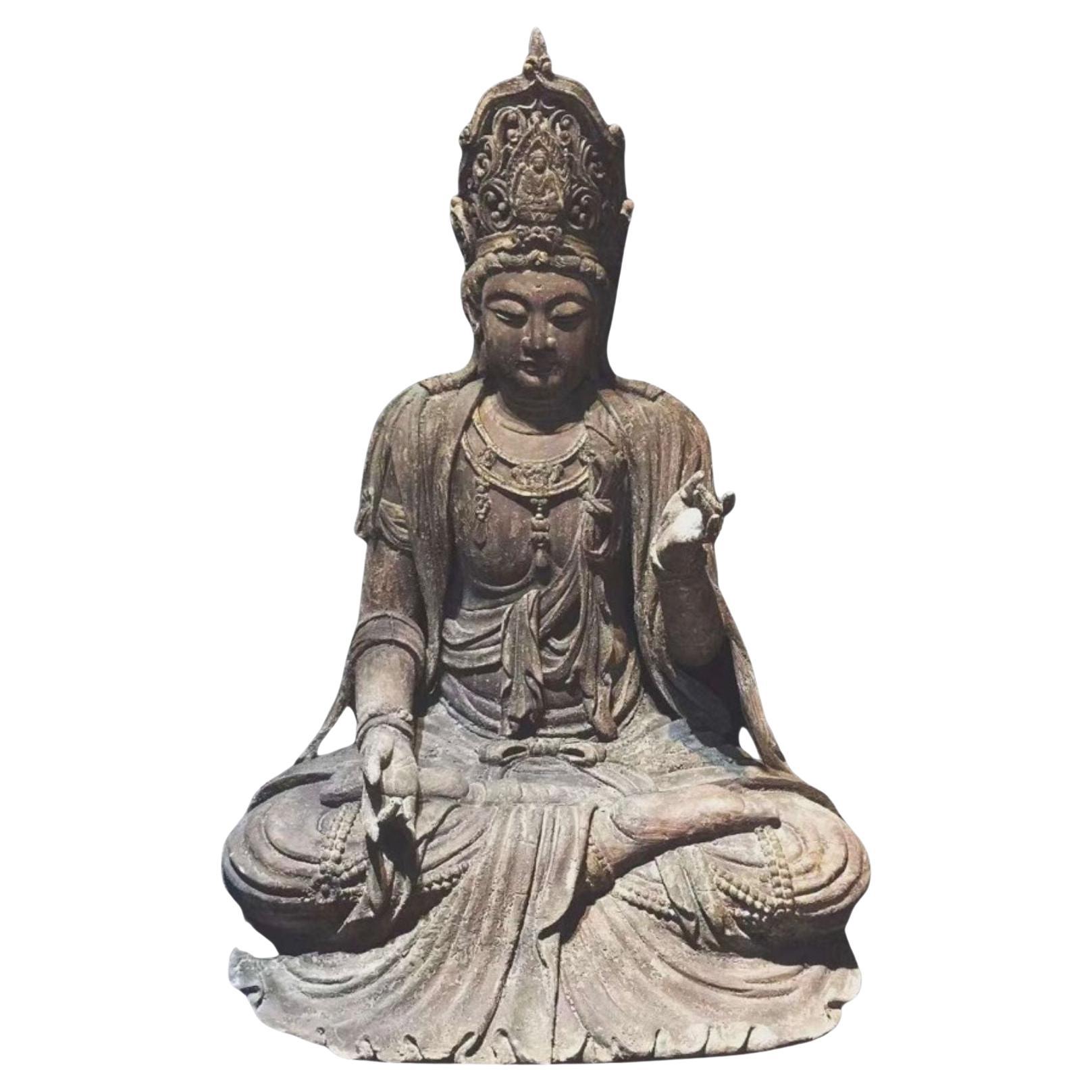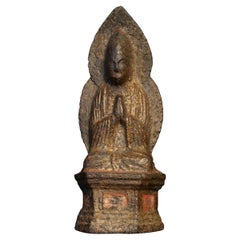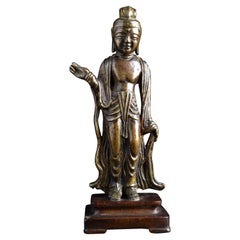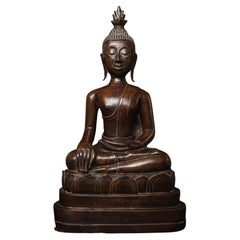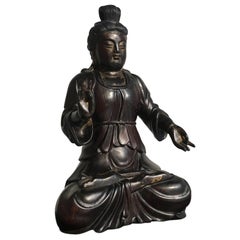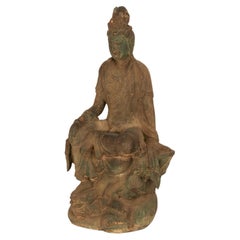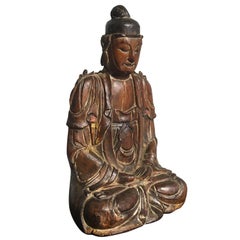Items Similar to Ming-style Sculpture of Chinese Bodhisattva Guanyin, circa 1900s, 6518
Want more images or videos?
Request additional images or videos from the seller
1 of 17
Ming-style Sculpture of Chinese Bodhisattva Guanyin, circa 1900s, 6518
$10,000
$17,50042% Off
£7,587.77
£13,278.6042% Off
€8,675.94
€15,182.8942% Off
CA$13,967.29
CA$24,442.7542% Off
A$15,529.72
A$27,177.0242% Off
CHF 8,108.77
CHF 14,190.3442% Off
MX$189,034.56
MX$330,810.4842% Off
NOK 103,464.31
NOK 181,062.5542% Off
SEK 96,941.12
SEK 169,646.9542% Off
DKK 64,750.11
DKK 113,312.6942% Off
Shipping
Retrieving quote...The 1stDibs Promise:
Authenticity Guarantee,
Money-Back Guarantee,
24-Hour Cancellation
About the Item
A large Ming-style sculpture of Chinese Bodhisattva Guanyin, circa 1900s, from a century-old US collection. Dated circa 1900s based on the face (bulbous eyes and parrot nose), style of the robes (especially the distinctive cinched rippled robes at the chest held together with a bow), and look of the wood. It was purchased just over 100 years ago by an (American) family living in China, where they lived in the late 19th/early 20th century as international merchants. It was shipped to the US in the 1930s, where it sat in storage for 85 years until recently when the grandson (now in his 80s) opened the storage unit and decided to disburse much of the collection. It is in good condition, as can be seen in the photos - most of the original poly-chrome remains. There is a loss to the crown (which contained 3 Buddhas), loss and splits to the ribbons, and missing hands. Otherwise, it is in good condition. The piece is near life-size at a full 32.5 inches tall by 23 inches wide by close to 17 inches deep. Due to the size, age, and delicacy of this piece, it will probably need to be crated and shipped. We will work with the winner to identify the best local shipper - 6518.
- Dimensions:Height: 32.5 in (82.55 cm)Width: 23 in (58.42 cm)Depth: 17 in (43.18 cm)
- Style:Ming (In the Style Of)
- Materials and Techniques:
- Place of Origin:
- Period:
- Date of Manufacture:circa 1900s
- Condition:Wear consistent with age and use.
- Seller Location:Ukiah, CA
- Reference Number:1stDibs: LU5669224855622
About the Seller
5.0
Vetted Professional Seller
Every seller passes strict standards for authenticity and reliability
Established in 2001
1stDibs seller since 2021
14 sales on 1stDibs
- ShippingRetrieving quote...Shipping from: Ukiah, CA
- Return Policy
Authenticity Guarantee
In the unlikely event there’s an issue with an item’s authenticity, contact us within 1 year for a full refund. DetailsMoney-Back Guarantee
If your item is not as described, is damaged in transit, or does not arrive, contact us within 7 days for a full refund. Details24-Hour Cancellation
You have a 24-hour grace period in which to reconsider your purchase, with no questions asked.Vetted Professional Sellers
Our world-class sellers must adhere to strict standards for service and quality, maintaining the integrity of our listings.Price-Match Guarantee
If you find that a seller listed the same item for a lower price elsewhere, we’ll match it.Trusted Global Delivery
Our best-in-class carrier network provides specialized shipping options worldwide, including custom delivery.More From This Seller
View All18thC Tibetan Buddha or Bodhisattva. Rare and Fine - 9460
Located in Ukiah, CA
Rare type 18thC Tibetan Buddha or Bodhisattva. 5.25" tall not including its custom base. Very distinctive sculpting style in the way the crown and robes are deliberately displayed a...
Category
Antique 18th Century Tibetan Antiquities
Materials
Bronze
$6,325 Sale Price
25% Off
Extremely Early Chinese Buddha, 7359
Located in Ukiah, CA
Extremely early Chinese Buddha. This piece measures a substantial 9 1/4 inches tall and 11 inches with its custom base. Rare and special-it has one of th...
Category
Antique 15th Century and Earlier Chinese Antiquities
Materials
Bronze
7/8thC Korean Bronze Bodhisattva - 9001
Located in Ukiah, CA
Very special 7/8thC Korean bronze of a Bodhisattva. One of the best in my entire collection. See Sotheby's "The Art of the Buddha" (Lot 60) on September 2...
Category
Antique 15th Century and Earlier Korean Antiquities
Materials
Bronze
$19,500 Sale Price
33% Off
Very special 18thC Buddha from the kingdom of Nan.
Located in Ukiah, CA
Very special 18thC Buddha from the kingdom of Nan (an old kingdom in Northeast Thailand). He is closely related to Buddha 8961- one of my all-time favorites. Nan Buddhas have a dist...
Category
Antique 18th Century Thai Antiquities
Materials
Bronze
Korean Bronze Buddha- Large and very special early Buddha. Good Age
Located in Ukiah, CA
6-9th Century Silla Dynasty style Korean Buddha-Looks to have a very good age, but not a period piece. Extremely large at 16.5 in tall. Superb face. Kore...
Category
Antique 15th Century and Earlier Chinese Sculptures and Carvings
Materials
Bronze
$56,000 Sale Price
20% Off
Large Japnese Buddha -Carved by Enku?
Located in Ukiah, CA
Life-size Carved Wood Buddha, possibly by the great 17thC Japanese carver Enku. One of the all-time greats, this piece has all of the qualities of one of his best (look online or at ...
Category
Antique 17th Century Japanese Sculptures and Carvings
Materials
Wood
$72,000 Sale Price
20% Off
You May Also Like
Chinese Carved Zitan Figure of a Bodhisattva, Qing Dynasty
Located in Austin, TX
A finely carved Chinese zitan wood figure of an unidentified bodhisattva, possibly Guanyin, late Qing Dynasty, circa 1900, China.
The androgynous figure has a plump, almost matronly face, with downcast eyes and a gentle smile. The hair in long tresses, gathered and tied in a high chignon.
The enlightened being is portrayed seated in dhyanasana, bare feet resting on crossed legs, both soles pointing up.
Thick robes billow and drape around the full figured body. The hands display...
Category
Early 20th Century Chinese Qing Sculptures and Carvings
Materials
Lapis Lazuli
Antique Chinese 18th Century Qing Dynasty Gaunyin Bodhisattva Carved Wood Statue
Located in Portland, OR
A large antique 18th Century Chinese Qing dynasty carved wooden figure statue of the Bohisattva Guanyin.
This wonderful carved statue depicts Quanyin "The one who perceives the sound...
Category
Antique 18th Century Chinese Qing Sculptures and Carvings
Materials
Wood
Chinese Carved Wood Bodhisattva Guanyin, Late Ming Dynasty, 17th Century
Located in Austin, TX
An attractive carved wood figure of the Bodhisattva Avalokiteshvara, known as Guanyin in China, late Ming Dynasty, early 17th century, China.
Guanyi...
Category
Antique Early 17th Century Chinese Ming Sculptures and Carvings
Materials
Gesso, Wood
Small Song Dynasty Carved Wood Bodhisattva, 13th Century, China
Located in Austin, TX
A small and very fine Chinese carved sandalwood figure of a bodhisattva, possibly Avalokiteshvara (Guan Yin), Song Dynasty (960 to 1276), circa 13th ...
Category
Antique 15th Century and Earlier Chinese Sculptures and Carvings
Materials
Hardwood
Early Ming Dynasty Chinese Buddha Statue, circa 14th Century
Located in Dallas, TX
A very fine late Yuan to early Ming Chinese terracotta gilt and polychrome painted Buddha figure, he is dressed in thick robes, his hair arranged in ty...
Category
Antique 15th Century and Earlier Chinese Ming Figurative Sculptures
Materials
Terracotta
A Large Chinese Carved Wood Figure of Guanyin, Late Qing Dynasty
Located in ARMADALE, VIC
Description:
A singular example of Guanyin. Deviating from the Bodhisattva’s conventional pose of ‘royal ease’, the figure is instead seated in the meditative padmasana, or ‘lotus position’, rendering this Guanyin something of a rarity. An Apana more typically associated with depictions of Buddhas, Guanyin assuming this pose immediately signifies this figure as one of particular spiritual reverence. Both feet are revealed crossed upon one another from beneath fabric which spills before her, her left palm turned upward with her hand resting upon her left knee and her right raised in a relaxed gesture. Adorned with a diadem housing a depiction of Amitabha Buddha, her own spiritual guide, she exudes an air of tranquil regality, further characterised by her numerous strings of beads and elaborately fastened dhoti, attire traditionally reserved for Indian princes. Though the figure’s dress is Indian her face is undoubtedly exemplifying artistic Chinese beauty standards. Her face is soft and rounded, full in both the lips and cheeks, with eyes that restfully peer down, as though she is watching over the worries of mankind with compassion.
Notes on the item:
Guanyin is the Chinese interpretation of Avalokiteshvara, the Indian Bodhisattva of compassion. The term “Bodhisattva” is derived from the Sanskrit “Bodhi”, meaning ‘awakening’ or ‘enlightenment’, combined with “Sattva”, meaning ‘spirit’ or ‘being’, referring to one on the path to achieving enlightenment. Bodhisattvas in Mayahana Buddhism are recognised as figures who have effectively achieved enlightenment yet relinquish their accension to nirvana in order to remain amongst mankind in the ultimate act of compassion to aid as spiritual guides. As such, the Bodhisattva inhabit a liminal space between samsara and nirvana; enlightened beings that maintain a relationship with humanity that buddhas cannot, as attaining Buddhahood necessitates the abandonment of all worldly attachments, including mankind. Guanyin’s very name, ‘One who hears the cries of the world’ highlights this role as a compassionate figure who acknowledges the suffering and strife of man. Along with Mahāsthāmaprāpta, a fellow bodhisattva, Guanyin serves as an attendant to Buddha Amitabha, with these three deities recognised as the Three Sages of Western Pure Land Buddhism, a sect of Mayahana Buddhism popular in East Asia.
Avalokiteshvara is commonly posited to have been adopted from Indian Buddhism into China as Guanyin around 200-400 CE, however it was the Tang dynasty (618-907) which saw the popularisation of the deity. By the Ming (1358–1644) and Qing (1644–1911) dynasties, Guanyin held the position as the most popular female deity in China. The unique state of religion in China held no monolithic canon regarding Buddhism and saw the assimilation of several belief systems, primarily Daoism, Buddhism and Confucianism. Consequently, Guanyin became a deity to be revered beyond Buddhism alone, appointed as both an official imperial deity and Daoist deity in the 12th century. Guanyin may also be seen to fulfil the role of idealised femininity as prescribed by Confucianism, with the scarcity of female Chinese deities perhaps accounting for the gradual gender shift Guanyin underwent.
The Indian Avalokiteshvara is unequivocally recognised as male, whilst the supposed gender of Guanyin remains contentious. Although there is a clear shift from the masculine Avalokiteshvara towards a more feminine representation, it is unclear if Guanyin is understood to be entirely feminine, to inhabit qualities of both genders or to be elevated beyond gender entirely, embodying neither. Depictions of Guanyin are highly androgynous, which some believe lends credence towards Guanyin symbolising the unity of dualistic forces as recognised in Daoism, displaying the anthropomorphism of yin and yang.
Comparative Analysis:
Market comparisons of similar Qing Dynasty polychrome figures of Guanyin include lot 767 (no.2) From Christies ‘Important Chinese Ceramics and Works of Art,’ New York, 25 March 2022, with the price realised USD 52,920 (Estimate USD 20,000 – USD 30,000). Christies also auctioned a comparable polychrome Guanyin...
Category
Antique Late 19th Century Chinese Qing Sculptures and Carvings
Materials
Hardwood
More Ways To Browse
Large Chrome Sculpture
Antique Storage Units
Ming Carved Wood
Antique Korean Wood Furniture
Bow China
Bodhisattva Chinese
Parrot Art Piece
Chinese Guanyin
Tall Buddha Sculpture
Chinese Wood Buddha
Chinese Wood Carved Chest
Korea Chest
Carved Parrot
Antique Guanyin
Guanyin Sculpture
Hand Carved Asian Chest
Korean Century Chest
Large Carved Wood Buddha
